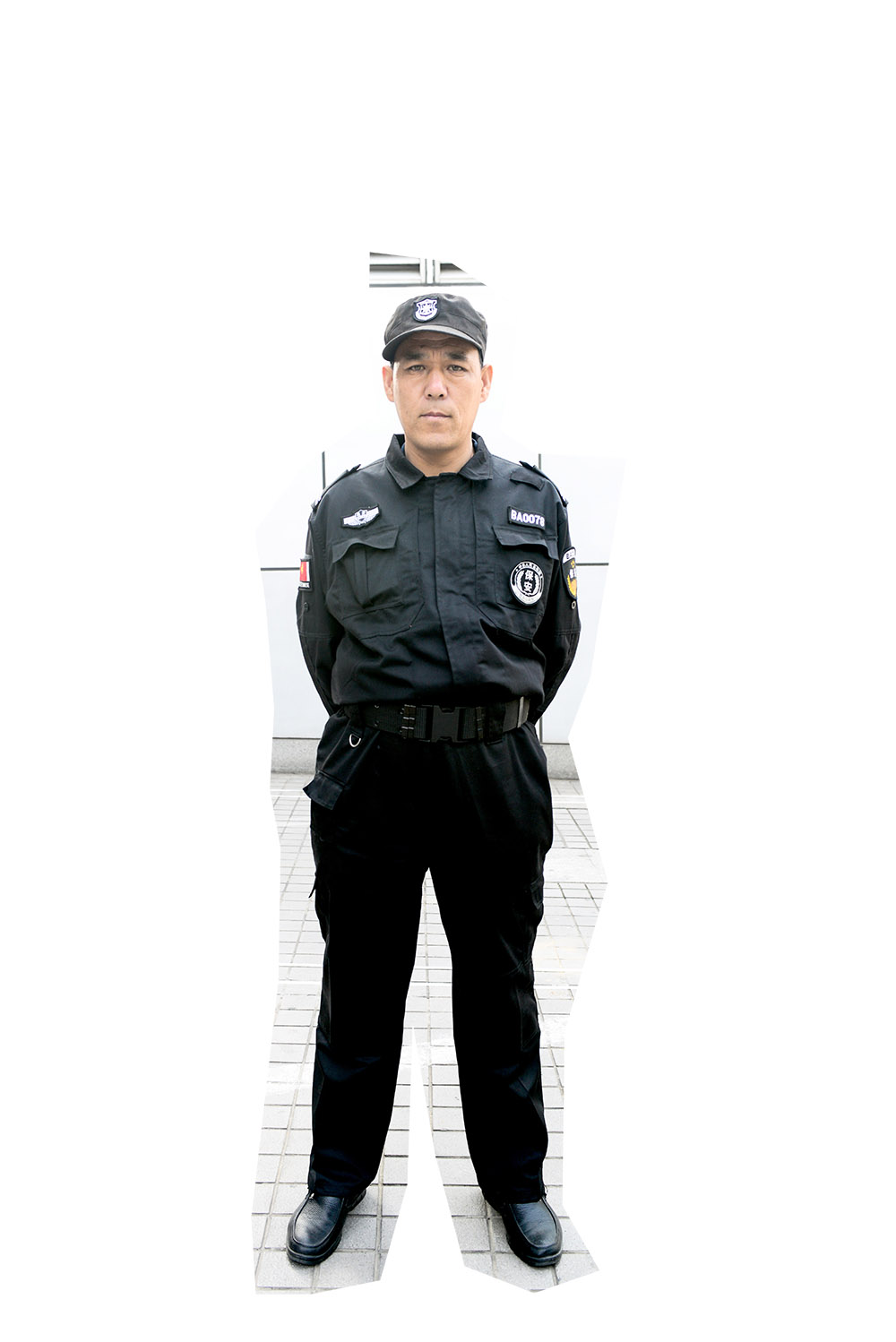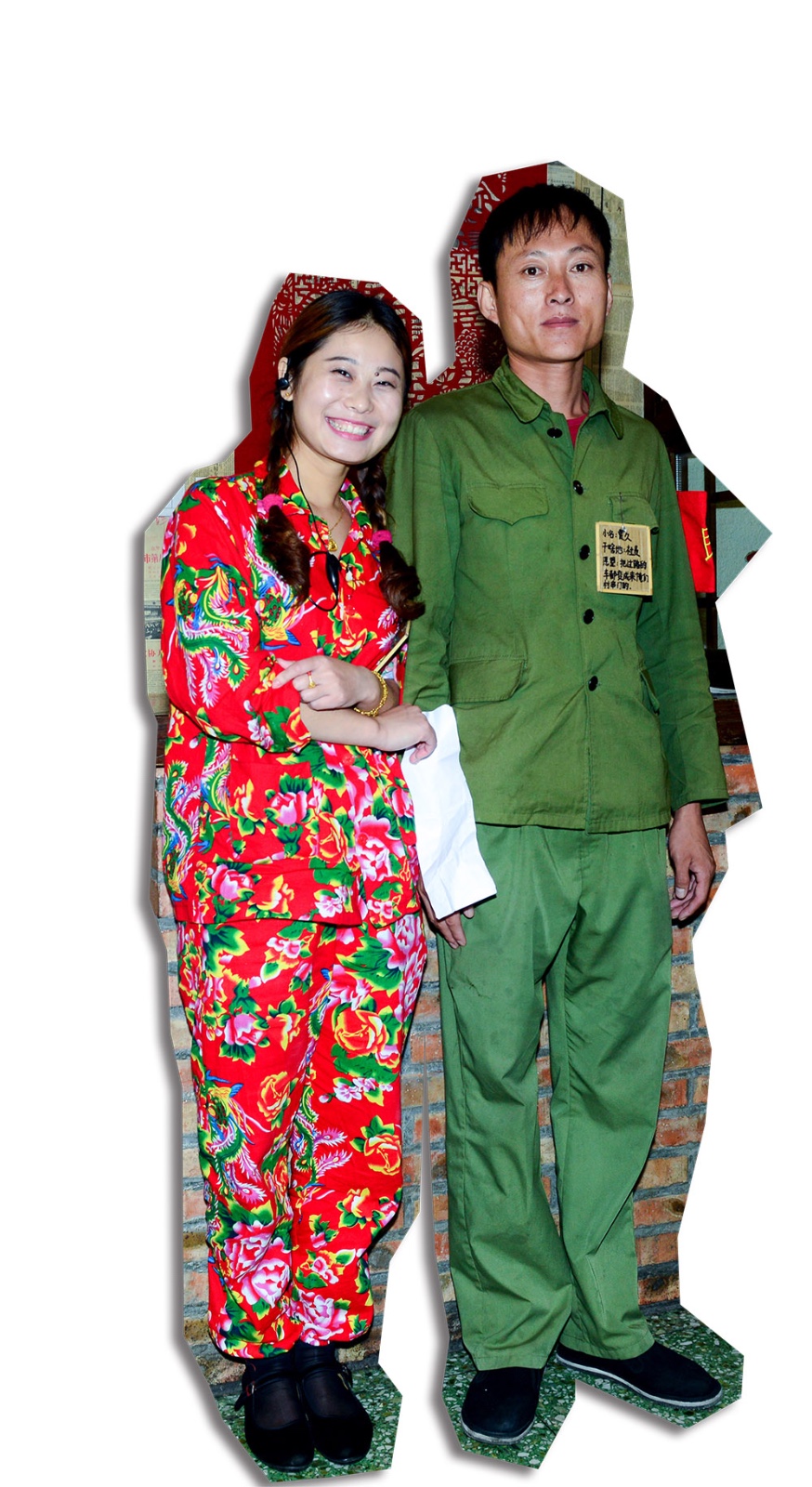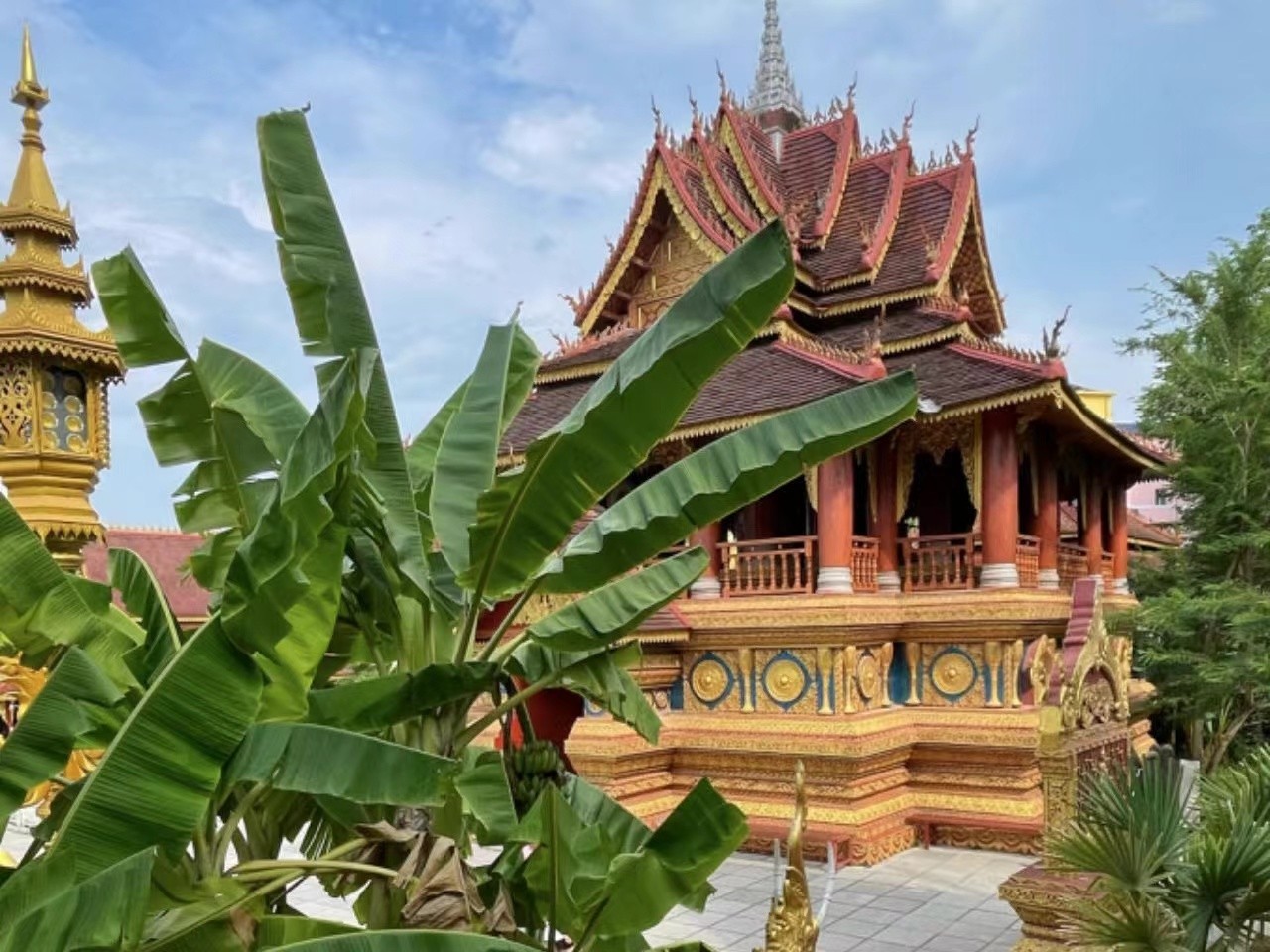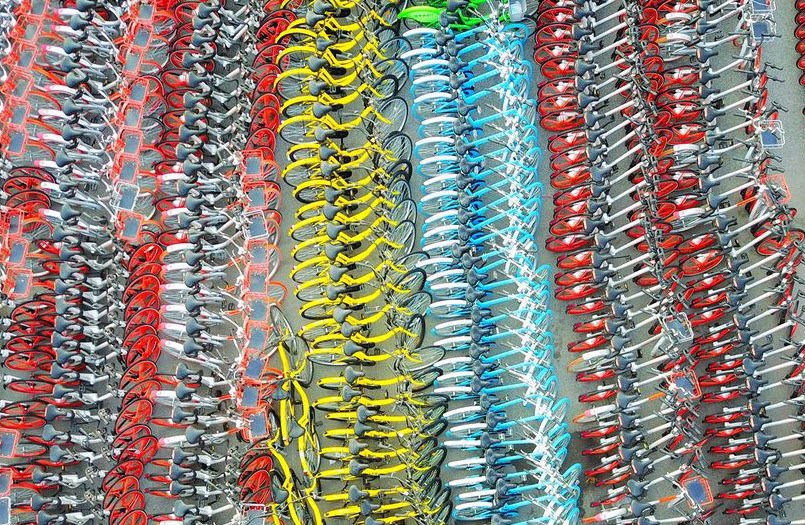Photos by Holly Li
Uniforms are a pervasive part of many societies. For centuries they have colored battlefields, distinguished authority figures from the masses and lent an unspoken sense of formality to events and individuals. They signify belonging to a certain group and can have both positive and negative connotations. Soldiers are typically viewed as heroic, prisoners feared and police officers regarded as somewhere in the middle, depending on the observer.
But in China there seems to be a particular adherence to uniforms. The chances are that at some point today, you have come across more than one. From entering the subway, passing security and stepping onto the train, you will have encountered not one, but multiple uniformed staff. Walking down the street will have meant dodging bright orange street cleaners, food-delivery staff on scooters or identically dressed salon workers receiving their morning briefing. Upon entering your office, you may have passed uniformed security guards on your way to colleagues dressed in suits and ties. They’re inescapable.

The uniform's place in Chinese society can be traced back through the country’s history. As in most places across the world, they have been worn throughout the ages in the military to distinguish between factions and provide protection. Each dynasty favored a different style for its soldiers. Drawings of soldiers from the Eastern Zhou Dynasty (770-221 B.C.) show studded boots and uniforms with heavy arm and torso protection, whereas similar depictions from the Sui Dynasty (A.D. 581-618) illustrate draped and layered military wear [see collage]. Uniforms were often as fierce as the battles their wearers fought in.
Uniforms were also designed to show status and mark levels of authority. In China, the Terracotta Warriors in Xi’an were molded to wear styles commonly found in the Qin Dynasty (221-207 B.C.). Officers' ranks were discernible by their dress, with generals wearing a dual long jacket, long pants, thigh protectors, a crest hat and a pair of boots with square tips.
But at points throughout history, uniforms were deemed fashion items too. By the 20th century, Chinese fashion began to differ significantly from the more individualistic styles developing elsewhere (in the West particularly), with style in 1950s China becoming uniform in the other sense of the word.

Zhongshan suits (Chinese tunic suits, above) were hugely popular among males, with women’s clothing based on a similar style. Introduced by Sun Yat-Sen shortly after the founding of the PRC (and made famous by Mao Zedong who favored it in public, hence the nickname ‘Mao suit’), the clothing became a form of national dress. It was seen as a counterpart to the Western business suit, but with distinct political implications due to its association with Chinese communism.
Referred to as ‘cadre clothes,’ the tunic suits were also popular because of the economic situation at the time – materials were scarce and the style promoted function over form. The once-typical feminine aspects of women’s clothing almost disappeared from view, with baggy and plain-colored designs effectively hiding the female body.
By the start of the Cultural Revolution in 1966, the uniform had become a fashion genre unto itself. It became the default choice of everyday wear for many across China. On a basic level, it showed alliance to the Party: By reducing the personality expressed via dress, it reinforced the notion that the whole (society) was more important than its parts (individuals).
A recognizable uniform from this period is that of the Red Guards, the paramilitary groups of civilians formed to attack the ‘Four Olds’ of Chinese society (customs, culture, habits, and ideas). They sported distinctive military-style uniforms: green jackets, similar to those worn by the Chinese army at the time, with red armbands attached to one of the sleeves. The Red Guards were young (often university or high school students), so their ascendance marked a reversal of roles in society. As such, their uniforms supported their newfound power and clearly indicated to enemies of the Cultural Revolution who they should be wary of.
This notion that military style symbolized authority – and thus status – was ubiquitous at the time. With colorful and extravagant clothing seen as a mark of the feudal and bourgeois classes, uniforms became so popular that both men and women would wear them to get married.
China has moved on from this era, both politically and stylistically. But while uniforms are still prevalent in many aspects of Chinese society, they have evolved to fit modern times.
In the military, clothing now follows the generic western style of pants, jacket and a hat. After new ceremonial and casual uniforms were unveiled in 2007 – adopting chest insignia for the first time – Chief of the PLA General Logistics Department, General Liao Xilong, explained that: “Increasing global military exchanges have upped the requirements for PLA uniforms. The new outfits fuse global trends with Chinese characteristics.”
The Zhongshan suit has also undergone modernization. With an altered shape and more streamlined look, the once shapeless garment is now fitted and more flattering for the male body. But while it is still a popular choice for Chinese leaders during important events, tunic suits are rarely seen in wider society.
Yet, there are many places where uniforms live on. This is the case in the hospitality industry in particular, explains Catalina Calin, director of Calin Fashion Academy in Beijing.
“In Europe, you don’t see uniforms that often [compared to China]. Hospitality is the one industry that is still using them because they can project the type of service or professionalism that you are expecting,” she says. “A uniform is very important for how a client sees you, but it’s also important for how the employee is feeling. The uniform has to be fitted right for the person to feel confident and beautiful.”
Calin believes there will be more emphasis on uniforms’ appearance in the future: “Chinese ladies are starting to become more conscious of their appearance and beauty. This flows through to the places they work, which have to fit their needs,” she says, citing staff the New World Hotel’s Yin on 12 bar as an example of progression. “They wear short black skirts, rock-style shoes and dark make-up. This brings a very cool image to the bar.”
But China’s love affair with uniforms stretches far beyond hospitality. While there is no single explanation for this, it may reflect a more inherently collectivist culture, where self-identity is shaped by group memberships. In the workplace, or in schools, people feel a stronger sense of self if they are able to define themselves as part of a group. It is perhaps natural that uniforms are increasingly shunned in more individualistic societies, so might the lack of creative expression frustrate China’s millions of uniformed workers?
“I’m unsure if this is wrong or good, because it can be both,” says Calin. “But from a fashion point of view, of course you need to be original. This is difficult in China.”

On the streets of Beijing, the way people feel about wearing uniforms varies wildly. Outside Ginza Mall we find Xing (above), a safety officer from Shanxi, wearing a dark blue-black shirt, pants and hat. “I feel like a soldier when I wear my uniform,” he declares, demonstrating an army-like pose. “It makes me feel like I’m part of a team. I like all of it.”
But not all are so positive about their work clothes. Zhao (below left), a 55-year-old former architect from Zhangjiakou, has been a cleaner around Dongzhimen for half a year. Like most cleaners, he is given two uniforms (one for winter and a lighter one for summer). Currently, he is wearing an orange jacket and pants and a pair of worn-out gray gloves, while carrying a straw broom and bucket in hand.
“I don’t like the color. If I could change my uniform I’d change the color because the orange doesn’t look very attractive. The uniform isn’t comfortable. It’s checked regularly though so we can’t change it in any way,” says Zhao, who says that cleaners all wear their own shoes but that their employers provide washing powder.


In fact, cleaners’ uniforms in Beijing differ according to location. One cleaner at Tiananmen Square, Liu (above right), 51, wears a royal-blue suit with yellow accents as he rides in a small electric cart with a bucket picking up trash. “My uniform is comfortable and I think the blue looks good,” he says.
His uniform is in stark contrast to Zhao’s bright orange. The latter’s dress may be down to practical considerations, such as the heavy traffic in Dongzhimen and the need for greater visibility. But in the restaurant world, the style of uniform is largely dependent on the establishment’s level of service and cuisine. High-end restaurants feature more of a classic style (shirt, pants) than those found in fast-food restaurants, for instance, which favor casual wear in the form of polos and tracksuits.

Zhang (above left), a server at the popular Guijie restaurant Culiang Renjia, wears a floral-printed top-and-pant combination with simple black shoes and pigtailed hair. Apart from a faint resemblance to pajamas, the uniform is visually appealing, and it fits the restaurant’s theme
of nostalgia.
“I like my uniform because it’s unique and looks nice,” she says. “It’s very comfortable.”
As in most countries, uniform wearing begins from a young age in China. A student at Beijing No. 55 Middle School, 12-year old Fu (below), wears the mandatory tracksuit school uniform in blue, white and red. The tracksuit-style uniform has been worn by schoolchildren for more than two decades.
“Foreigners at my school don’t have to wear the uniform. I’d rather not have to wear it either because I don’t think it looks very good. I think other countries' school uniforms look much better.”

She tells us that her school has three uniforms (though all are variations on the tracksuit), which cost RMB480 altogether. The tracksuits were designed – like many school uniforms – to prevent comparisons between students’ appearances and to eliminate worries over clothing choice. The style fulfills these criteria, but at what cost? As one online commentator bluntly assessed: “They are the ugliest in the world.”
This particular comment came after US First Lady Michelle Obama visited a Beijing high school in 2014 and photos from the trip were splashed across social media. Commentators pointed out that the tracksuit is practical and wear-resistant, though many expressed that other designs can fulfill the same goals.
For students, as with adults, uniforms can increase the wearer’s confidence. Some believe that more stylish school wear may help students perform better (or feel happier, at least). In April 2013, the Henan Provincial Experimental School in Zhengzhou decided to let students design their own uniforms. The results were met with praise from parents and the public, and delight from students.
“Students have their own sense of aesthetics at their age,” the school’s Student Affairs Director, Feng Yan, told CCTV.
Such experiments are not necessarily a sign of relaxing attitudes toward uniforms in contemporary China. Despite a growing sense of individualism among younger generations, uniforms’ historic, cultural and practical role may see them widely retained across the country – and across industries. But while dressing in the same way may be, in some respects, the antithesis of fashion, uniforms are also subject to change over time. If these changes can accommodate both function and form, their place in society may be safe for some time to come.






















0 User Comments